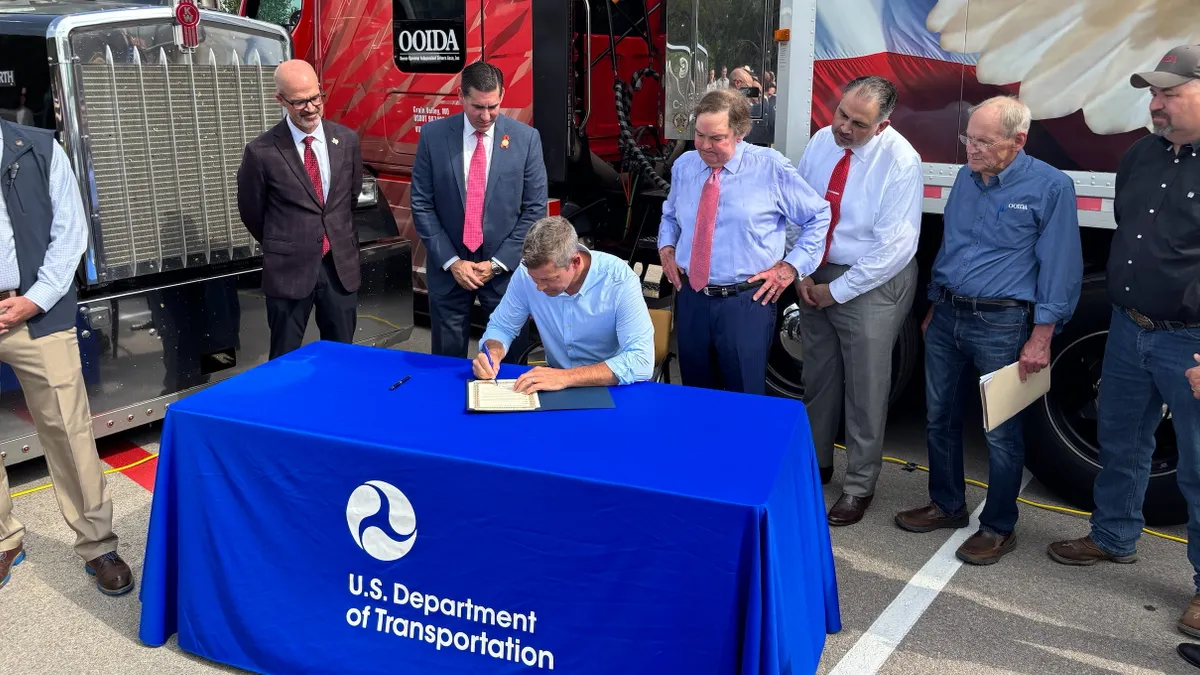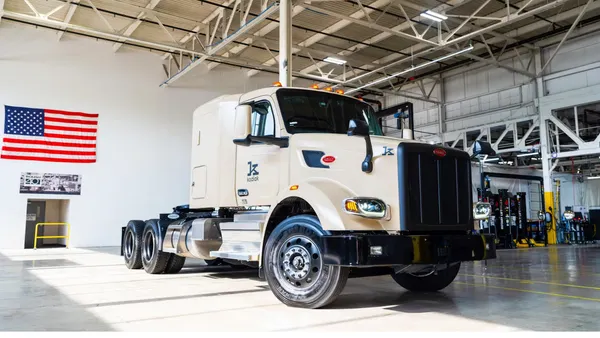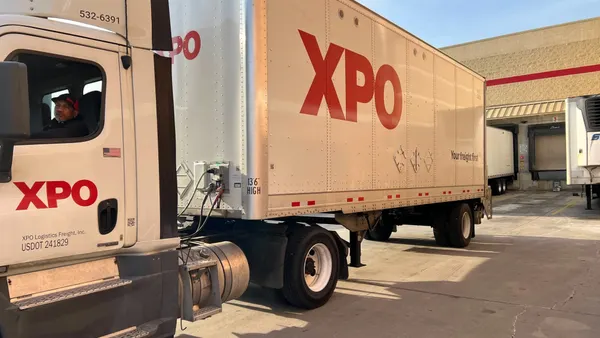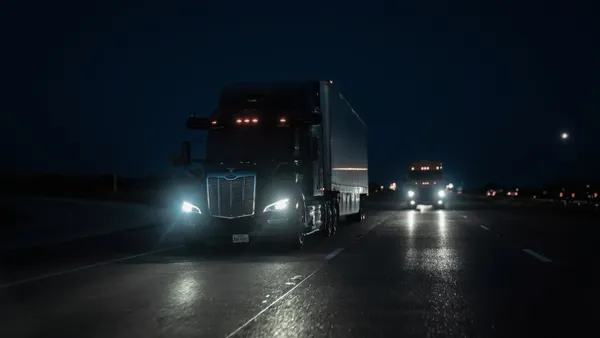Dive Brief:
- Nine West Coast utilities and two agencies representing 24 municipal utilities have proposed electric-charging stations for trucks every 50 miles along Interstate 5 and connecting highways, according to their report issued through the West Coast Clean Transit Corridor Initiative.
- The first phase would build 27 sites along I-5 for medium-duty electric vehicles (EVs) by 2025, according to the report. By 2030, "14 of the 27 charging sites would be expanded to also accommodate charging for electric big rigs by 2030, when it is estimated that 8% of all trucks on the road in California could be electric," the report says. Sixteen sites will be in California, five in Oregon and six in Washington.
- The plan could take years, as rural areas do not have the power-generating capacity for charging medium-duty trucks, the report found. But most utilities in urban areas of Washington, Oregon and California have the ability to offer medium-duty EV charging, according to the report. No rural area along I-5 can currently serve heavy-duty trucks, meaning the infrastructure to provide such a service has to be built out.
Dive Insight:
The three West Coast states are being aggressive about mapping out plans to electrify trucks. On Thursday, the California Air Resources Board (CARB) will vote on a proposal to transition fleets to electric.
CARB is mulling requirements to make manufacturers produce 9% of Class 8 straight trucks to be zero-emission and 5% of Class 8 tractors to be zero-emission in 2024. By 2030, the possible California mandate will be 30%, up from a previously discussed goal of 15%.
But for truck manufacturers and fleets to do their part, there has to be infrastructure for charging. That is where the West Coast Clean Transit Corridor comes in. The study found that fleet managers are very much watching what utilities and agencies in the three states do, and indicated they will deploy EVs as part of their freight-hauling fleet when they see the infrastructure assemble.
California has in the past blamed its busy ports and its congested interstates, heavy with truck traffic, for the smog that often polluted its skies. The report says transportation causes 40% of California's greenhouse gases (gHg). Heavy-duty trucks alone account for 8.4% of the state's annual gHg emissions, according to the CARB.
The state has seen enthusiasm from fleets and OEMs about making short-haul vehicles for the ports of Los Angeles and Long Beach, because those EVs will not travel long distances. At the April 2019 Advanced Clean Transportation Expo held in Long Beach, California, executives showed off a number of new models for short-range hauls.
"We are on the cusp of the transformation of truck power," said Paul Rosa, SVP of procurement and fleet planning for Penske Truck Leasing, during a session on alternative fuels held at the 2019 ACT Expo. But long-range use of EVs is much more theoretical.
If fleets use battery-electric vehicles (BEVs), they need charging stations every few hundred miles. Fuel-cell electric vehicles (FCEVs), using hydrogen as fuel, have longer range, but they would need fueling stations ready with hydrogen. In Southern California and the port area, the infrastructure for both is almost fully ready. But not for long hauls along the West Coast's main north-south artery, I-5.
Washington and Oregon also seek to cut down on emissions from their largest sources: transportation.
"The results of this study provide a roadmap for electric utilities in Washington, Oregon and California to help electrify transportation in a coordinated fashion," said Katie Sloan, director of eMobility and Building Electrification for Southern California Edison, one of the study’s sponsors, in the Wednesday news release.










